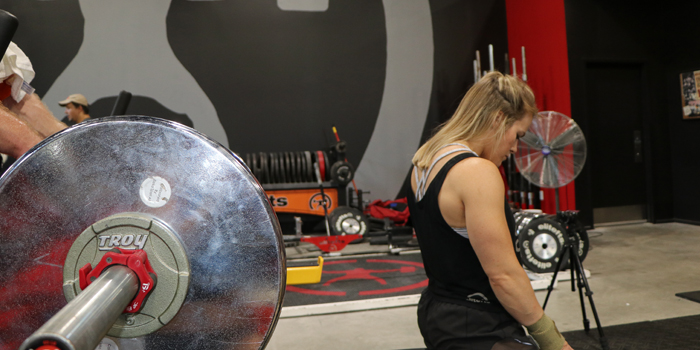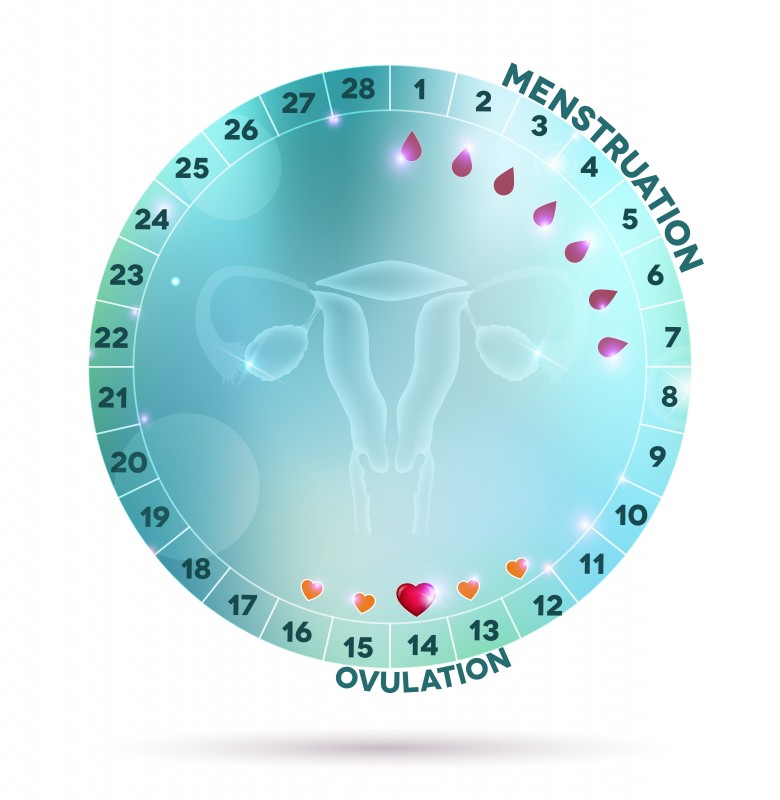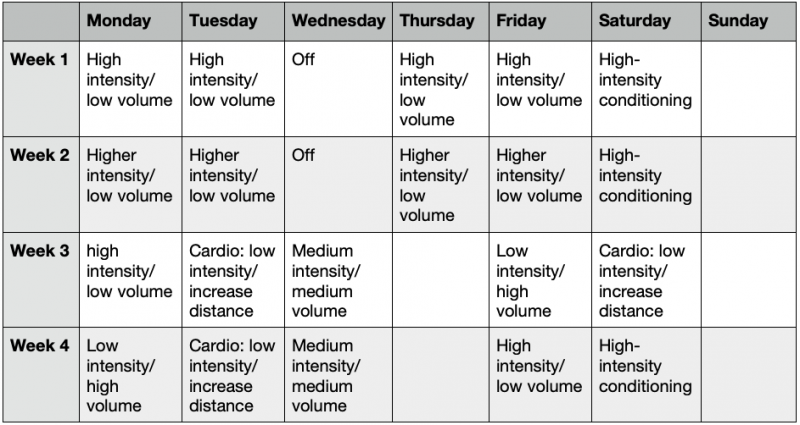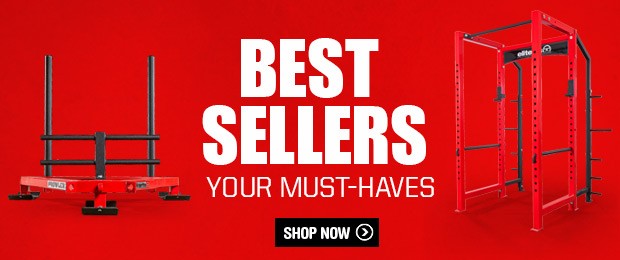
I used to think that the rules didn’t apply to me. Hell, ask my boyfriend, and he would say the same thing today.
Growing up, I thought that the “girl” rules didn’t apply to me. I was a tomboy. I wanted to wear basketball shorts, wear cut-offs, lift weights—basically do anything my dad did. He was one of my biggest influencers, and if I did what he did, the adaptations would be the same. If he took two scoops of protein powder, so did I. He would bench press, and I would, too. In my head physiologically, I would have male adaptations because I was doing everything a male does. Physiologically, the rules wouldn’t apply to me.
At 27 years old, I now understand it all — rules do apply to me. Any females not on birth control will not have the adaptations of a male because we have periods. Every month, females get reports of how our health is doing. Your period is not a nuisance or a pain in the ass; it is a monthly report, and it tells you something each time it comes around. When you are healthy, your menstrual cycle will come smoothly and regularly. It is when you are unhealthy that it will tell you an entirely different story.
What I’ve seen even more frequently is females asking their boyfriends/fiances/husbands to help them to get started on their health journeys and work out with them. It is a great first step, but if you are easily frustrated and eager to see results quickly, you may be shooting yourself in the foot. I watched a girl work out with her husband, and after a set of box squats, she cried because her husband was increasing his weight and she was stagnant for two weeks.
Women are different from men. We don’t need four weeks of increasing intensity, then a deload. Each week, there is something different happening to the body that needs to be accounted for.
I’ve really dived in head first and looked at the physiological side of the female body and how to train it for optimal adaptations. After collecting the research, asking questions, and listening to podcasts, I can’t think of any other way to train the female body. Each week for a female is different. Hormones are changing weekly, and we have to keep up on what they are doing to apply the correct intensity, volume, and recovery into our training.

guniita © 123rf.com
But for starters, let’s look and breakdown the female hormones.
Estrogen or Estradiol
Follicles in your ovaries release a type of estrogen called estradiol, which is the big bitch of estrogen. She is your happy hormone that stimulates serotonin and dopamine, promoting happiness, motivation, and pleasure. However, she also leads to fat depositions, faster bone growth, and lower total body mass.
Progesterone
Progesterone is the counterbalance of estrogen. Progesterone thins the uterine lining, even as estrogen thickens it. Progesterone prevents breast cancer, boosts the thyroid, and raises your core body temperature. Even further, it reduces inflammation, builds muscle, promotes sleep, protects against heart disease, and calms the nervous system.
Now we are diving into the phases of a menstrual cycle.
Phase 1: Follicular Phase
This phase can last anywhere from 7-21 days, with Day 1 starting on your first day of bleeding. Yes, you know how people have said to take it easy when they bleed and to back off? Actually, the opposite is true. You can really use this time to your advantage and make some serious progress or achieve personal records (PRs).
During this phase, follicles are entering their final stages of development.
A follicle is a sac in the ovaries that contains one egg. It produces estrogen, progesterone, and testosterone.
But with regard to training, this is when we are most like men. We have very low hormones to work around and play with. Our intensity, recovery, and nutrition are most like men. Our pain threshold is high, so we can push and grind out high-intensity training and recover adequately.
Week 1: During week one of this phase, our estrogen and progesterone are at their lowest. Along with the decline in progesterone, we trigger an inflammatory response, likely causing our premenstrual syndrome (PMS) symptoms. Neuromuscular control may be lower, so pre-training may be needed, including a little longer warm-up involving the central nervous system priming, such as jumps, throws, or sprints.
Training-wise, we want a high-intensity/low-volume week. We don’t want to start a new program, but we want to start peaking from a previous program and reap the benefits of low hormones. Enjoy doing conditioning or cardio? Great. Up the intensity from previous weeks, and try to PR. Not into cardio or conditioning? Get more working sets in. Instead of four working sets, up this to 5-6 working sets to maximize the higher energy you have.
Week 2: You are still in your follicular phase, but your hormones are rising to a peak later in the week prior to ovulation. As your estrogen rises, you might feel a surge of positivity and feel increasingly happy, positive, and alert. Your pain threshold is higher as well, thus increasing your ability to push and grind through a high-intensity training session.
Knowing these things, you want a high-intensity, low-volume workout for all of your sessions this week. Your energy is high, and your ability to recover is high, so take advantage of it by scheduling PRs this week or increasing your percentages. With a heavier training load, prioritizing a proper warm-up, proper nutrition, and proper sleep will be critical for hitting all of your sessions this week. Including sources of collagen will help with the increased load to recover the soft tissue, like tendons, ligaments, and muscles. Think of things like jelly, bone broth, and other vitamin C–rich foods.
Phase 2: Ovulation
It’s like throwing confetti at a wedding — once you throw it, there is no going back. The dominant follicles swell, and a hormone called the luteinizing hormone ruptures, which then releases the egg. Once your egg has been released, you will either get pregnant or you won’t, and then, two weeks later, you have your period.
But I don’t want to get pregnant yet; is there a way to skip ovulation? I’m sure there is, but it is a critical event because it's how you release progesterone. Think of progesterone as a reward for ovulating because then, we enter into phase two of the cycle.
Phase 3: Luteal Phase
Week 3: Let’s get sciencey first. You have just ovulated, and your egg has been released. During this phase, your emptied follicle (from your released egg) restructures itself into a corpus luteum.
Corpus luteum is a temporary endocrine gland releases progesterone.
Progesterone’s biggest job is to hold and nourish pregnancy, but as stated previously, it also reduces inflammation, builds muscle, promotes sleep, protects against heart disease, and calms the nervous system.
Later in the week, your basal heart rate will increase, at which time you may notice an increased appetite, and you may not feel as strong. Feelings of emotion and empathy will show more with the increased estrogen and progesterone. Taking your training from high intensity to medium intensity throughout the week is going to be your best bet to maximize training. This is a great time to start a new program focusing on moderate weight/moderate reps with new exercises. If you run or do cardio, this is a great time to do lower-intensity work but increase distance to align with your goals.
Week 4: By the end of the week, your hormones are declining and are ready to start the cycle all over. With your basal metabolic rate still increased, you may find your sleep is disrupted, and you may find it harder to fall asleep. PMS is coming on, and you may feel like not moving or doing any activity, but remember, exercise has anti-inflammatory and antioxidant properties, which have been shown to reduce PMS.
During this week, start the week with high-intensity/low-volume to low-intensity/high-volume reps with your training to reflect the sleep disruptions, energy depletion, and PMS you may have toward the end of your cycle. Continue the path for the week; then, you are looking to head back into week 1 with your low-hormone phase to really get after it for two weeks.
Here's what the month may look for you:

A period each month is a great thing. It tells us how our bodies are doing with our current lifestyles, habits, training, and nutrition. Keeping track of your period by using FitrWomen app. It has changed how my training and nutrition have been programmed. A few books referenced in the article that I highly recommend for understanding female physiology are Roar by Dr. Stacy Sims and The Period Repair Manual by Lara Briden.
Cassie Prenger is a performance coach to athletes and an active mentor to young coaches. Her experience includes working with private facilities such as The Spot Athletics and collegiate teams such as The Ohio State University and Case Western Reserve University. She is a member of the NSCA and USAW — a graduate of Capital University where she obtained a Bachelor of Science degree in Exercise Science.











1 Comment